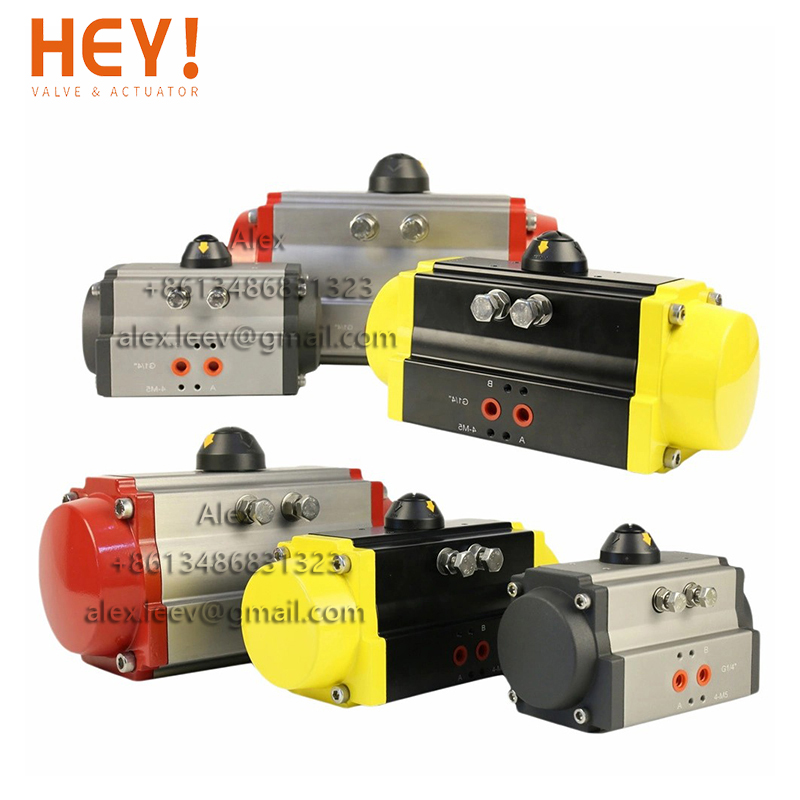Air Actuators 101: A Deep Dive into Manual Control Overrides
Air-powered actuators play a crucial role in a number of factory contexts, providing movement and management through compressed air. These devices change the energy from compressed air into mechanical motion, facilitating machinery and tools to function smoothly. One significant feature of certain pneumatic actuators is the hand-operated override, which enables operators to assume control of the mechanism directly, providing a essential redundancy method in case system failure or during maintenance.
The notion of a pneumatic actuator with human override merges the benefits of automated operation with the reliability of person intervention. This ensures that in situations where automatic control may not be possible, technicians can still directly control or operate the system. Grasping how these devices work and the importance of human overrides is important for those involved in the engineering, servicing, or operation of pneumatic technologies.

Grasping Pneumatic Actuators
These devices are devices that convert compressed air into mechanical motion. They are frequently used in various manufacturing applications, allowing for the mechanization of processes such as gate valves, airflow regulators, and additional control systems. By utilizing the power of pressurized air, these actuators deliver dependable and efficient movement, making them vital in settings where electric solutions may not be practical or secure.
The operation of a pneumatic actuator typically requires an a supply of air that is directed into a chamber, where it drives a plunger. This piston motion can be straight or rotary, depending on the design of the actuator. Various types of pneumatic actuators exist, including double-acting and simple models, each suited to different applications based on their motion requirements and the regulatory setup in place.
One of the key benefits of pneumatic actuators is the manual override functionality. This allows operators to manage the actuator manually in the event of a power failure or when servicing is necessary. The override feature is critical for ensuring that users can maintain control over operations, thereby enhancing security and reducing the likelihood of machinery damage. This added adaptability makes pneumatic actuators an attractive choice in many applications where dependability and control are paramount.
Significance of Manual Overrides
Human overrides are critical in guaranteeing that pneumatic actuators can be operated safely and reliably in every situations. In the case of a mechanical failure or power loss, the ability to manually control the actuator enables operators to maintain or control over the system. This capability can prevent accidents, protect equipment, and safeguard personnel by providing a means to stop or adjust machinery before it causes harm.
Furthermore, manual overrides enhance the flexibility of pneumatic actuators in various applications. pneumatic actuator with manual override enable operators to circumvent automated systems when necessary, enabling for tweaks or maintenance without shutting down the whole operation. This feature is particularly important in environments that require continuous operation, as it reduces downtime and maximizes productivity while providing the necessary tools to manage surprise issues efficiently.
Lastly, incorporating physical overrides in pneumatic actuators promotes ease of use and user confidence. Operators can be prepared to handle urgent situations or specific operational circumstances effectively, knowing they have a trustworthy backup method at their disposal. This confidence leads to better operational performance and can be a key factor in industries where exactness and security are paramount.
Applications and Benefits
Pneumatic devices with manual overrides are utilized in extensive use in various industrial settings, making them a valuable addition to automated systems. They are often used in processes that necessitate both automation and the ability to act manually when necessary. This dual functionality is particularly significant in industries such as manufacturing, the oil and gas industry, and wastewater treatment where precise control is vital for safety and efficiency.
The inclusion of a manual override allows users to take prompt control during crisis scenarios, loss of power, or maintenance procedures. This feature ensures that operations can continue smoothly or be halted safely even when automatic systems malfunction, reducing the risk of accidents or equipment damage. Additionally, manual controls enhance the versatility of pneumatic actuators, allowing users to adjust the operation without needing to completely shut down the automated process.
Moreover, the ease of use and reliability inherent in pneumatic actuators with manual control options lead to enhanced operational efficiency. Users can quickly switch between automated and hand-operated modes based on production requirements, which can lead to better resource management and reduced downtime. Overall, these actuators not only bolster safety and control but also simplify operations, making them an indispensable component in modern industrial environments.